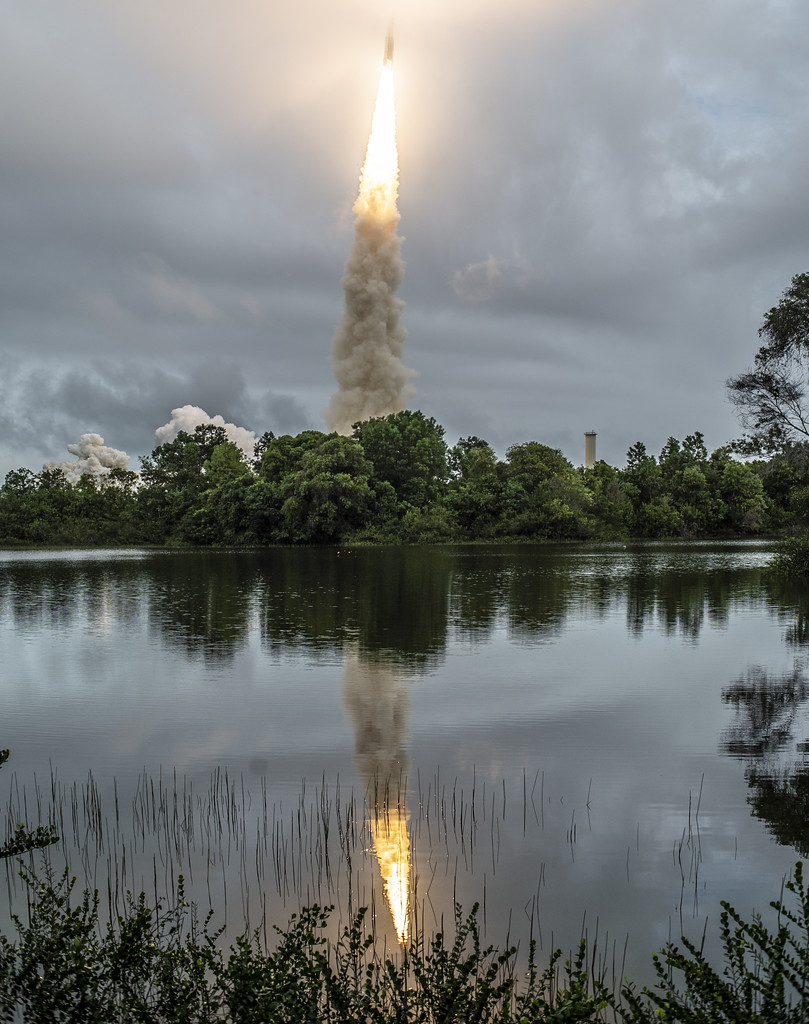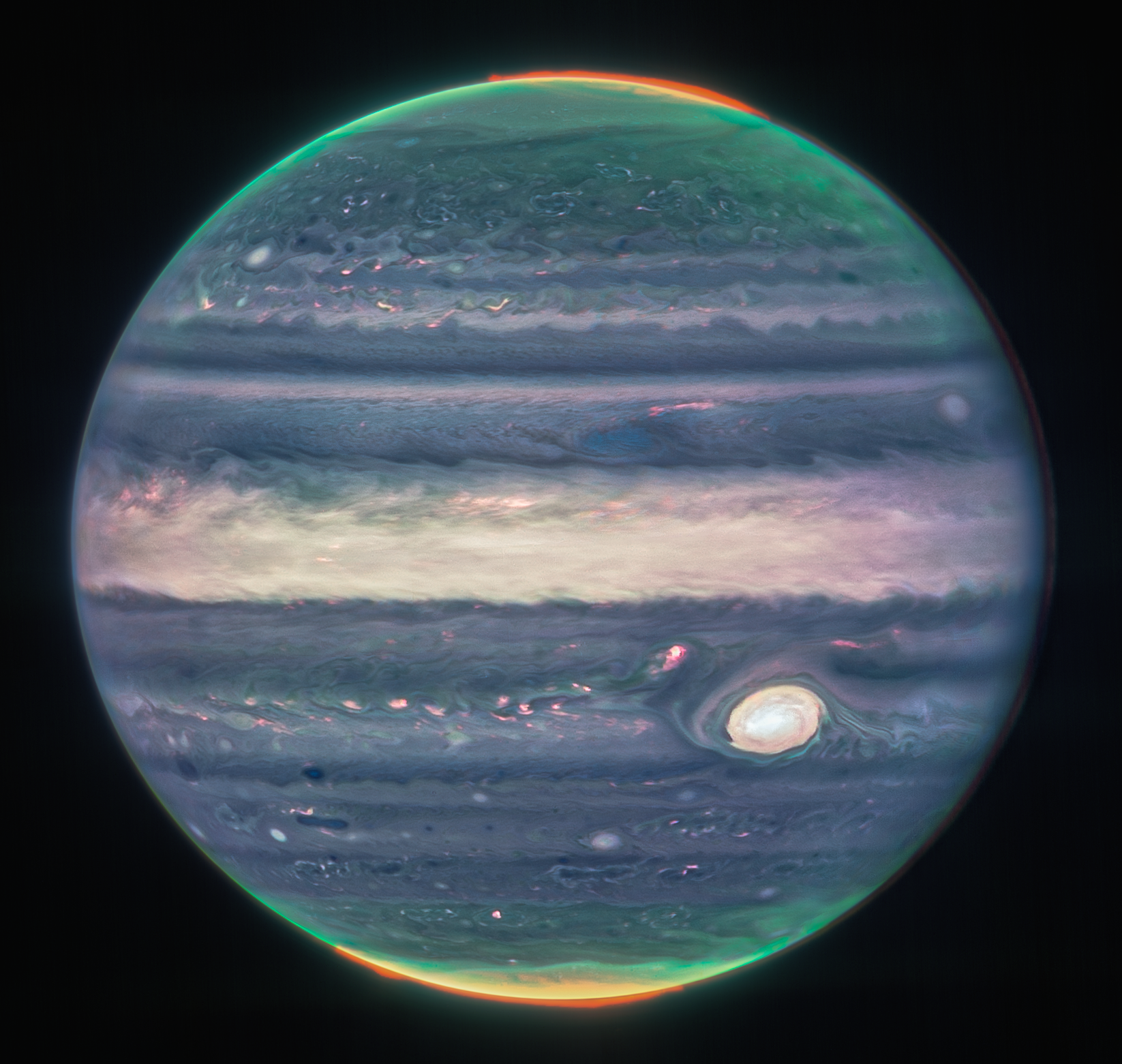
About James Webb
On the right is the American orbital infrared space telescope (James Webb Space Telescope, JWST). It is intended for a wide range of observations in astronomy and cosmology, in particular, the observation of the most distant objects and events in the universe, such as the formation of the first galaxies.
The development and management of the telescope is carried out through the international cooperation of 17 countries, led by NASA, with significant input from the European and Canadian space agencies. This telescope is the successor to Hubble as NASA's flagship astrophysics mission. At launch the webb telescope was the largest, most expensive and most sensitive optical and infrared space telescope in human history.
Click on the video to stop or start playback
Let's get started
In September 1989, the Space Telescope Science Institute (STScI) and NASA co-hosted the Next Generation Space Telescope Workshop at STScI, bringing together more than 130 astronomers and engineers. The group proposed that NASA investigate the feasibility of a 10-meter, passively cooled, near-infrared telescope in a high-Earth orbit or a 16-meter telescope based on the Moon to study galaxies at high redshift.
In 1996, an 18-member committee led by astronomer Alan Dressler formally recommended that NASA develop a space telescope that would view the heavens in infrared light—the wavelength band that enables astronomers to see through dust and gas clouds and extends humanity’s vision farther out into space and back in time. It would have a mirror with a diameter of more than four meters, and operate in an orbit well beyond Earth’s moon.
Three teams made up of scientists and engineers from the private and public sectors met to determine whether NASA could realize the committee’s vision. All three came to the conclusion that the proposed telescope would work. NASA agreed in 1997 to fund additional studies to refine the technical and financial requirements for building the telescope. By 2002, the agency had selected the teams to build the instruments and the group of astronomers who would provide construction guidance. Also in 2002, the telescope was formally named the James Webb Space Telescope, after the NASA administrator who led the development of the Apollo program.
Launching the telescope
The James Webb Space Telescope was launched on an Ariane 5 rocket. The launch vehicle and launch site are part of the European Space Agency's contribution to the mission. The Ariane 5 is one of the world's most reliable launch vehicles and was chosen for a combination of reliability (it was the only launch vehicle that met NASA's requirements for launching a mission like Webb) and for the value it brings via international partnership.
Webb was launched from Arianespace ELA-3 at Europe's Spaceport located near Kourou, French Guiana. It is beneficial for launch sites to be located near the equator - the spin of the Earth can help give an additional push. The surface of the Earth at the equator is moving at 1670 km/hr.
The Launch Segment has 3 primary components:
1. Launch Vehicle: an Ariane 5 with the cryogenic upper stage. Provided in the single launch configuration, with a long payload fairing providing a maximum 4.57 meter static diameter and useable length of 16.19 meters.
2. Payload Adapter, comprising the Cone 3936 plus ACU 2624 lower cylinder and clamp-band, which provides the separating mechanical and electrical interface between the Webb Observatory and the Launch Vehicle.
3. Launch campaign preparation and launch campaign. The launch campaign preparation and launch campaign is the mutual responsibility of NASA, ESA, Northrop Grumman and ArianeSpace.

Webb was launched on an ArianeSpace Ariane 5 Launch Vehicle on December 25, 2021. Credit: NASA/Chris Gunn
Stages of creating a telescope
Creation of the idea of a 10-meter near-infrared telescope.
Deepening the idea of the telescope, which will now work in orbit far beyond the Earth's borders.
The beginning of development, creation of teams, determination of the name of the telescope - after James Webb.
Nine out of ten key technologies of the project have successfully passed the examination, MIRI technology has been developed
The telescope has passed a critical examination of the design, and construction has begun.
The main mirror is completely finished and installed on the telescope.
Final adjustments, launch of the telescope on December 25.
How Can Webb Study the Early Universe?

The collision of the Antennae galaxies triggered the formation of millions of stars. Infrared observations in this image show warm dust clouds heated by newborn stars. CREDIT: NASA
When astronomers use a telescope to look further away, they are also looking back in time. The reason is simple: light needs time to travel through space. Even the light from the Moon is 1.3 seconds old when we see it on Earth. The most distant galaxies the Hubble Space Telescope has viewed are more than 13 billion light-years away. That means the light Hubble captured left those galaxies over 13 billion years ago.
As the universe expands, light gets stretched into longer and longer wavelengths, beyond the visible portion of the spectrum, into the infrared. By the time visible light from extremely distant galaxies reaches us, it appears as infrared light. Hubble can detect some infrared light—the wavelengths closest to the red end of the visible spectrum. The James Webb Space Telescope observes infrared wavelengths exclusively, seeing deeper into that portion of the spectrum than Hubble.
Where Hubble sees young galaxies, Webb can show us newborns. Webb is engineered to observe the earliest stages of galaxy formation and astronomers are hopeful it will allow them to study the formation of the very first galaxies. Webb could show how small galaxies in the early universe merged to form larger galaxies. Finally, where Hubble only sees the brightest outliers from this ancient epoch, Webb is capable of revealing much more of the general population of stars and galaxies during that period. This expanded sample of early galaxies will give astronomers a better idea of how galaxies looked as they first came into being and help them map the universe’s overall structure.
Webb Discovers New Feature in Jupiter's Atmosphere

. The high-speed jet stream, which spans more than 3,000 miles (4,800 kilometers) wide, sits over Jupiter’s equator above the main cloud decks. CREDIT: NASA
Jupiter has some of the most conspicuous atmospheric features in our solar system. The planet’s Great Red Spot, large enough to envelop Earth, is nearly as well known as some of the various rivers and mountains on the planet we call home.
However, much like Earth, Jupiter is ever-changing, and there’s much about the planet we have yet to learn. NASA’s James Webb Space Telescope is unlocking some of those mysteries, revealing new features of Jupiter we’ve never seen before, including a high-speed jet speeding over the planet’s equator. While the jet stream is not as visually apparent or stunning as some of Jupiter’s other features, it’s giving researchers incredible insight into how the layers of the planet’s atmosphere interact with each other, and how Webb will aid in these investigations in the future.
NASA’s James Webb Space Telescope has discovered a new, never-before-seen feature in Jupiter’s atmosphere. The high-speed jet stream, which spans more than 3,000 miles (4,800 kilometers) wide, sits over Jupiter’s equator above the main cloud decks. The discovery of this jet is giving insights into how the layers of Jupiter’s famously turbulent atmosphere interact with each other, and how Webb is uniquely capable of tracking those features.
Who was James Webb?
The Webb telescope is named after James E. Webb (1906–1992), NASA's second administrator. James Webb is best known for leading Apollo, the series of exploration programs that landed the first humans on the Moon. He also initiated a vigorous space science program that was responsible for more than 75 launches during his tenure, including America's first interplanetary explorer spacecrafts. Read more about the life and impact of James Webb.
How big is the telescope?
The sunshield dimensions are 21.2 by 14.2 meters (69.5 by 46.5 feet) and the height of the entire observatory is 8 meters (28 feet).
Webb’s segmented primary mirror has a diameter of 6.6 meters (21.7 feet). Each of the 18 segments is 1.32 meters (4.3 feet) across. The area of the mirror is approximately 25 square meters (270 square feet) and the mass is 705 kilograms (1,550 pounds on Earth).
Gallery







